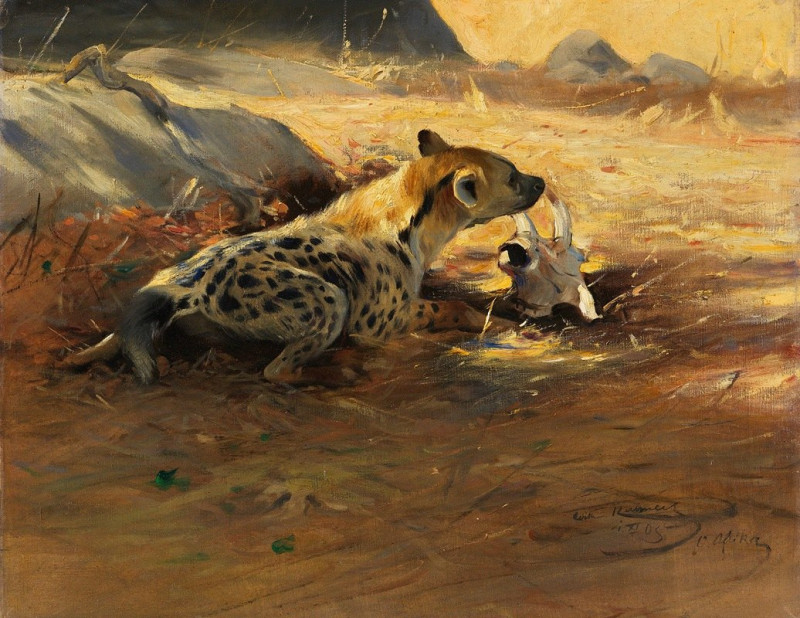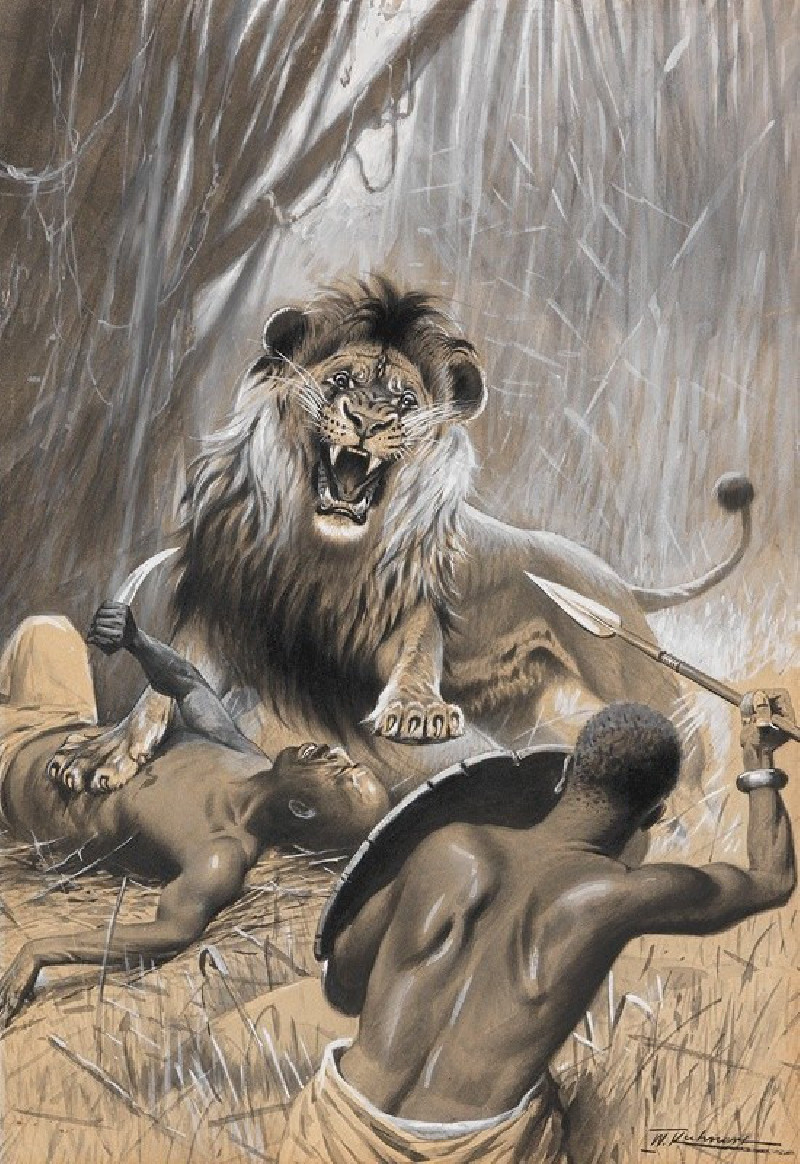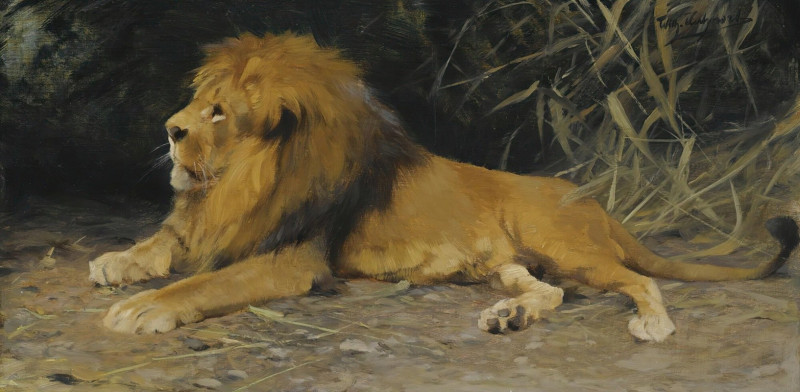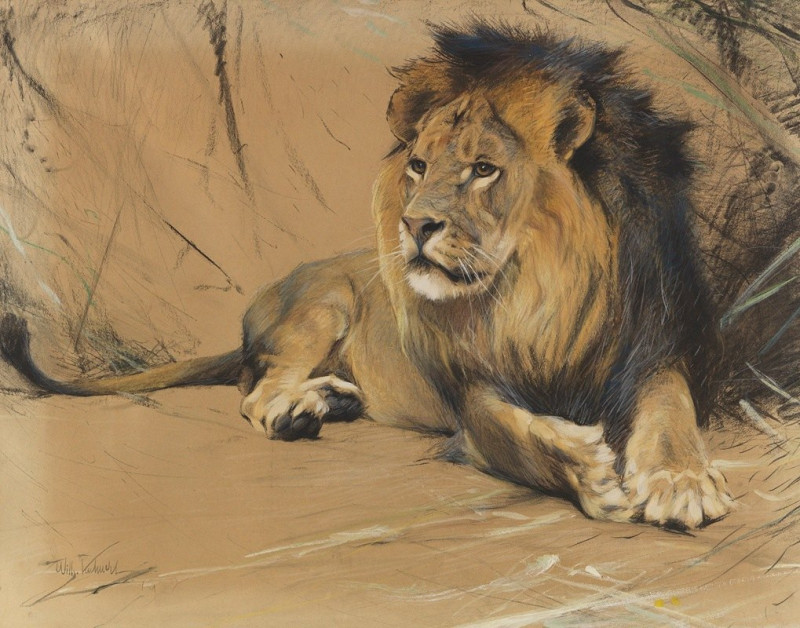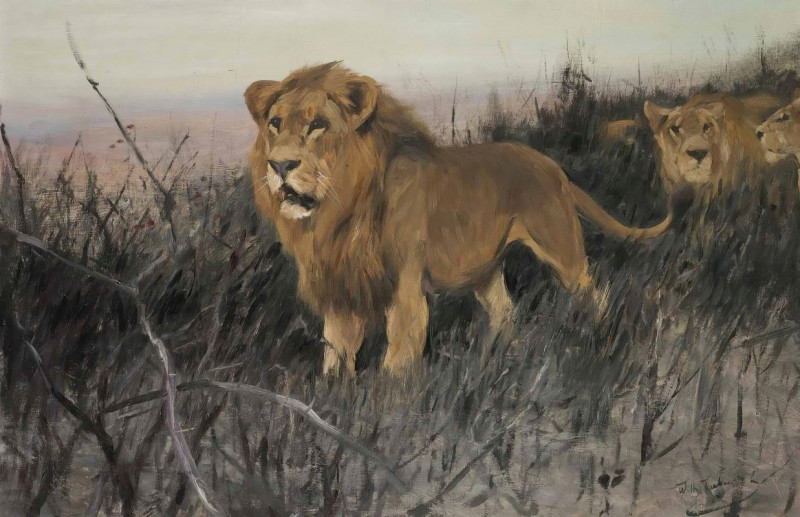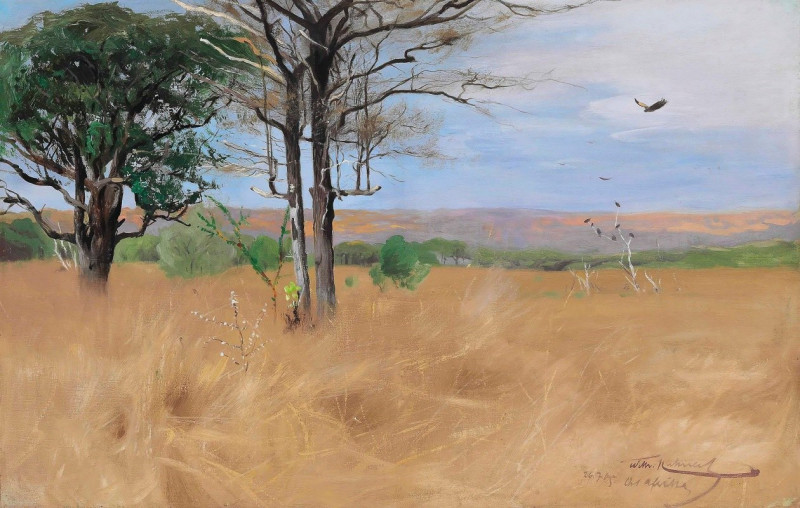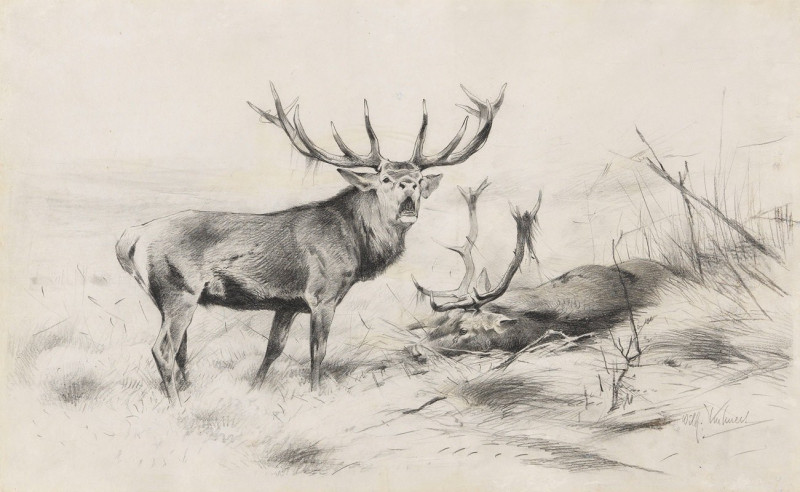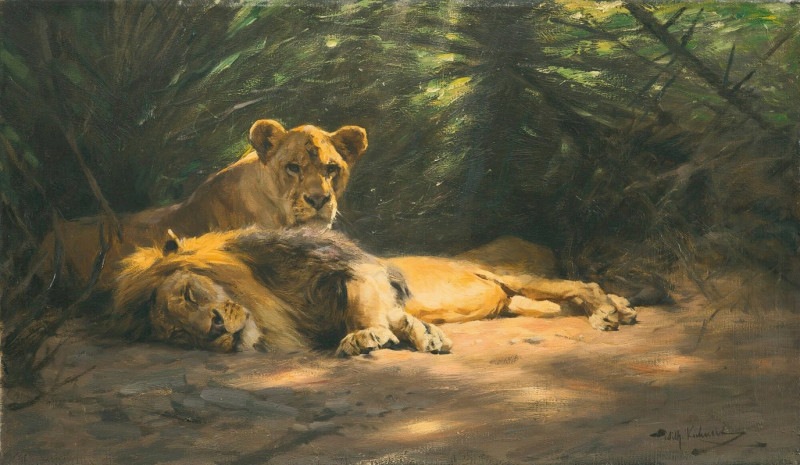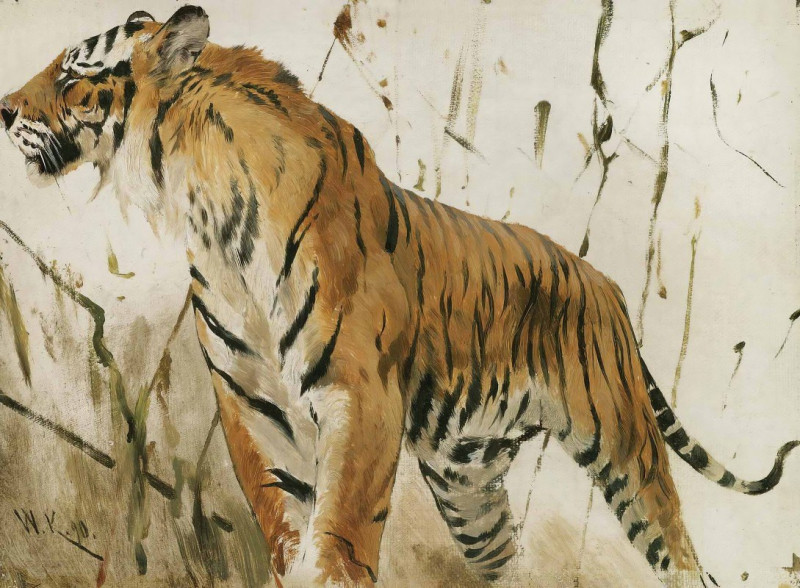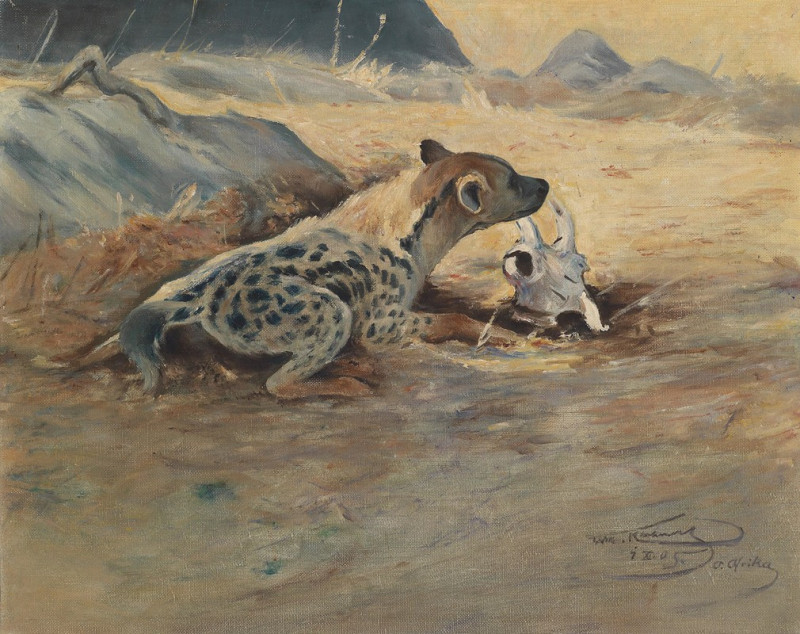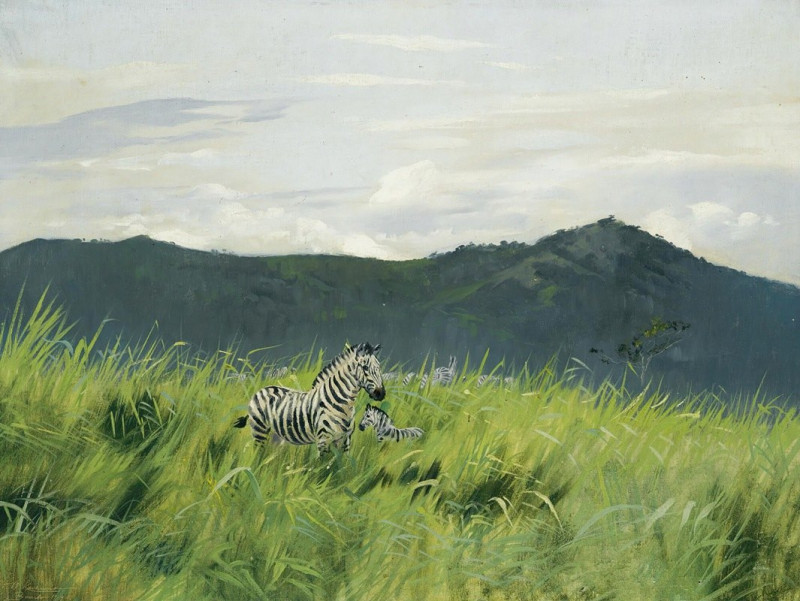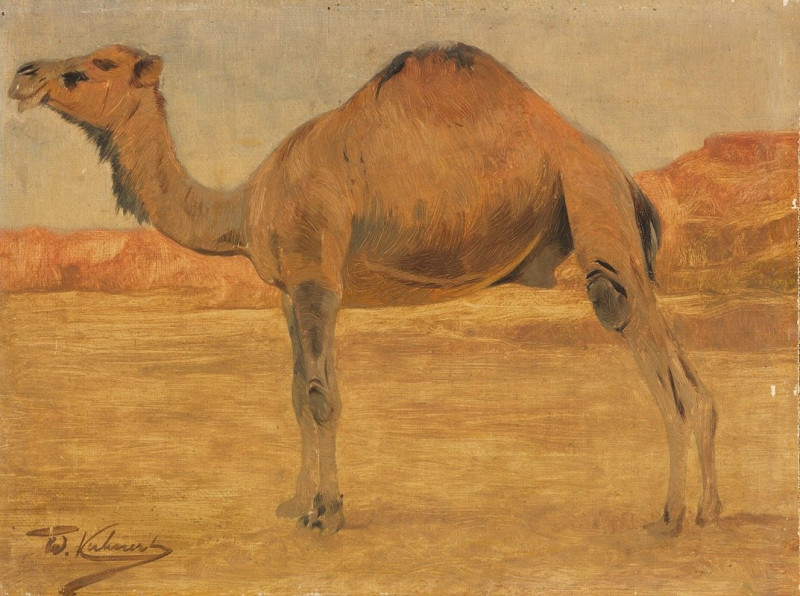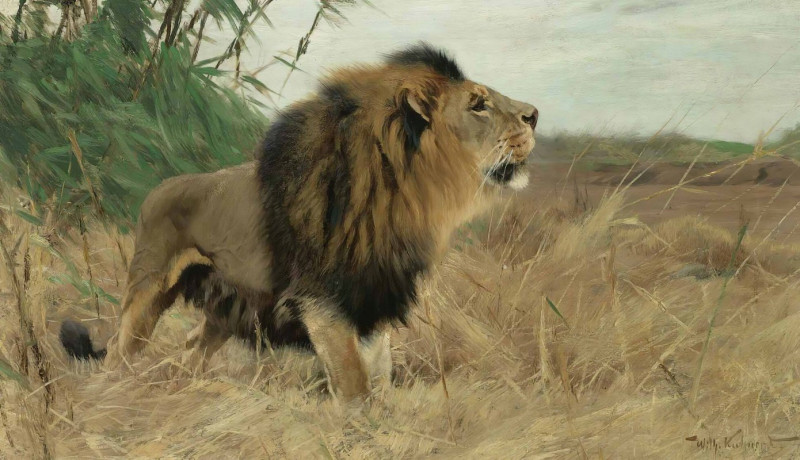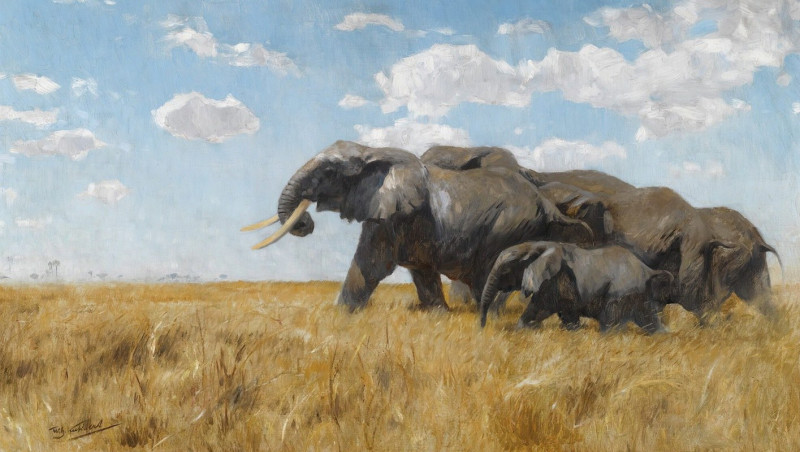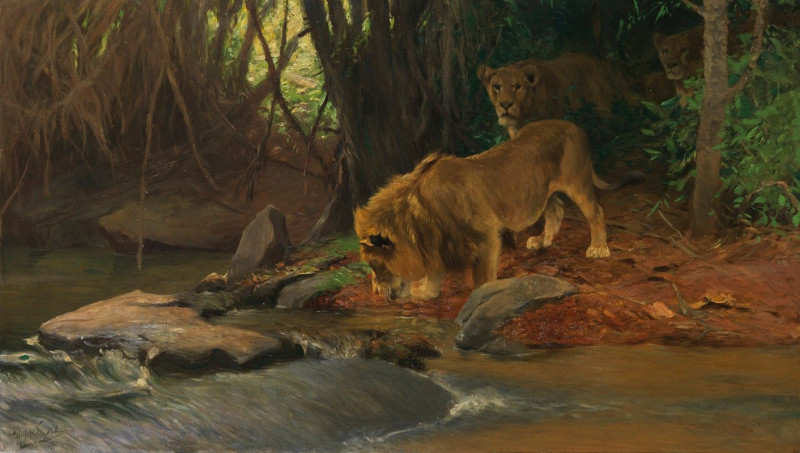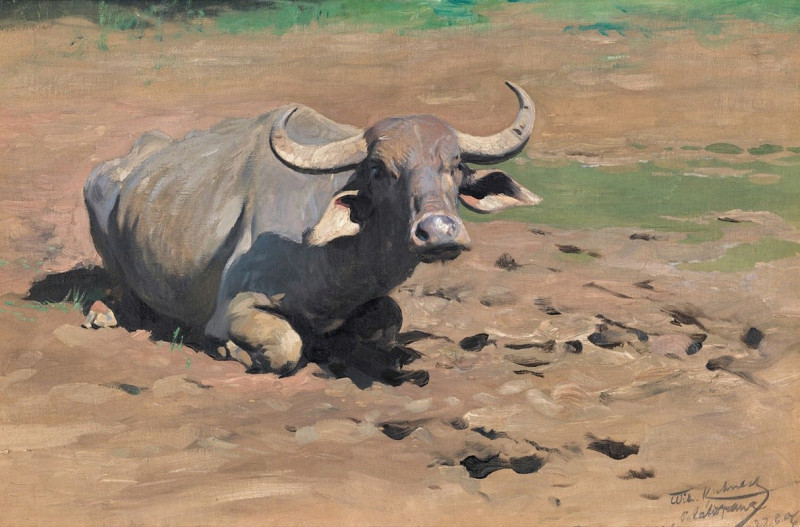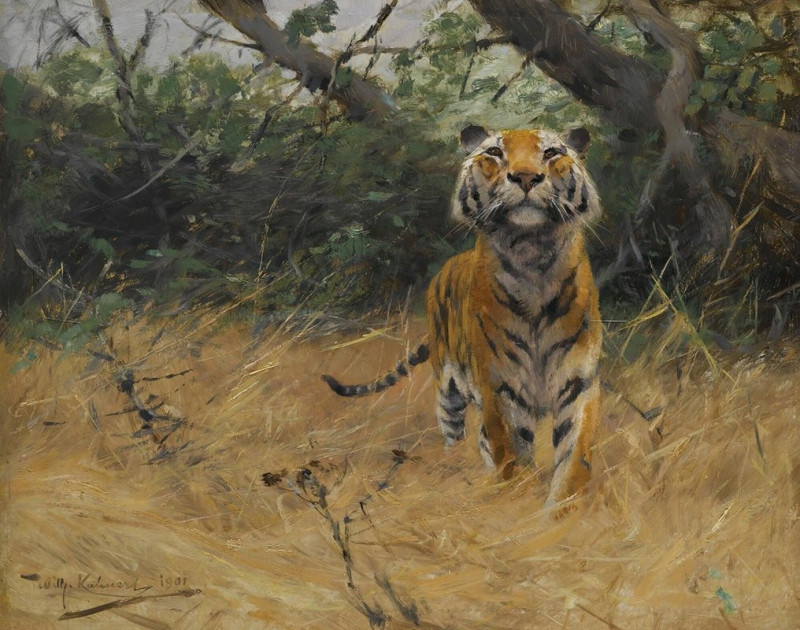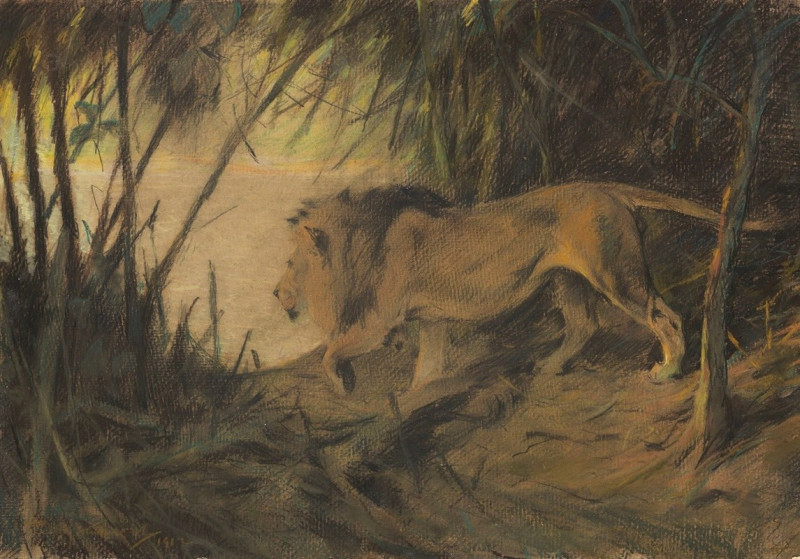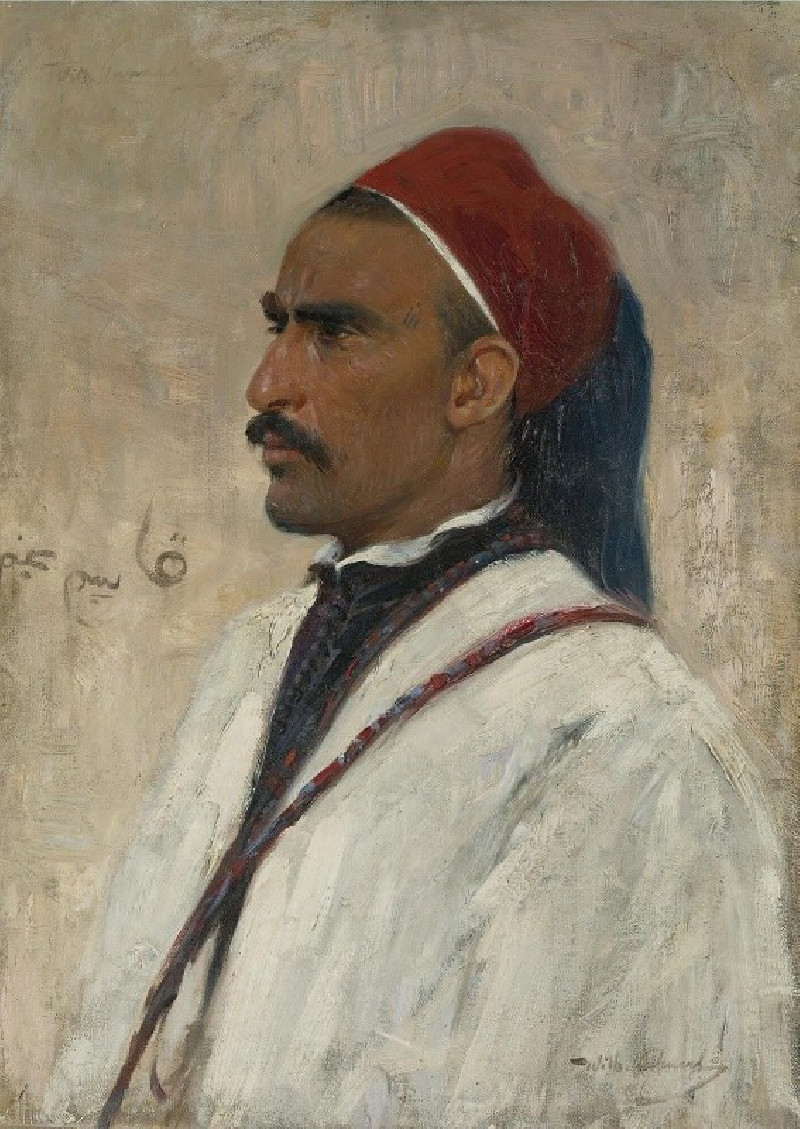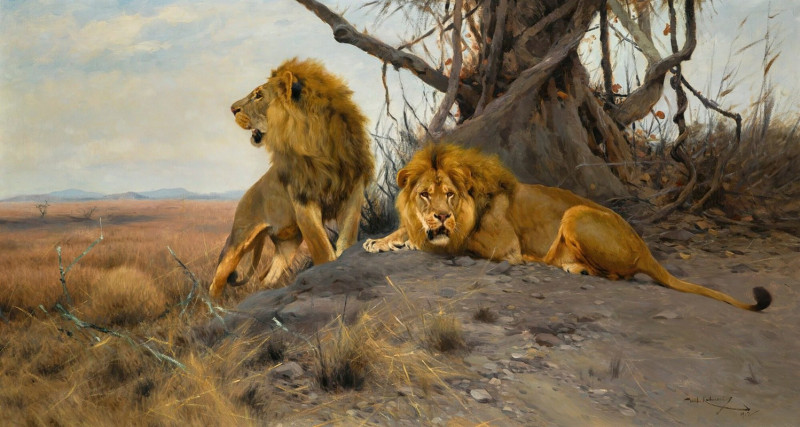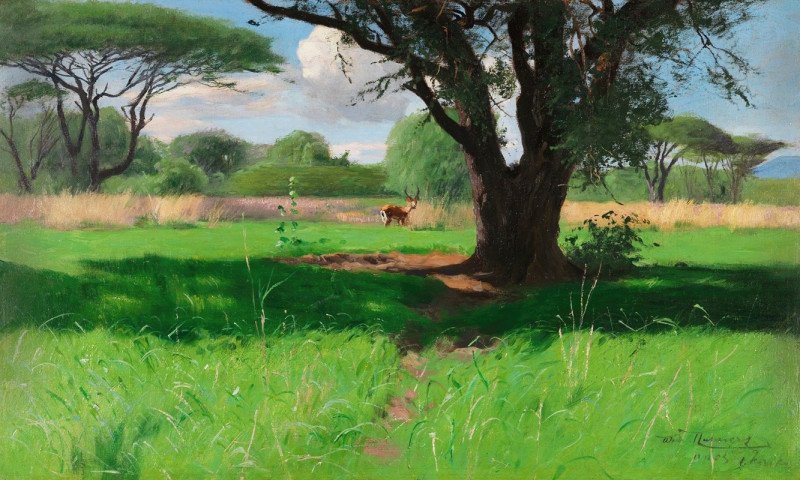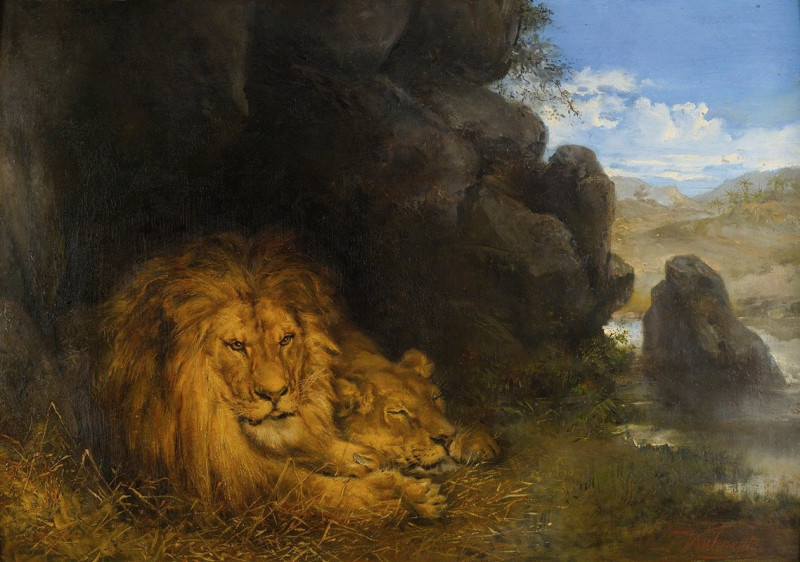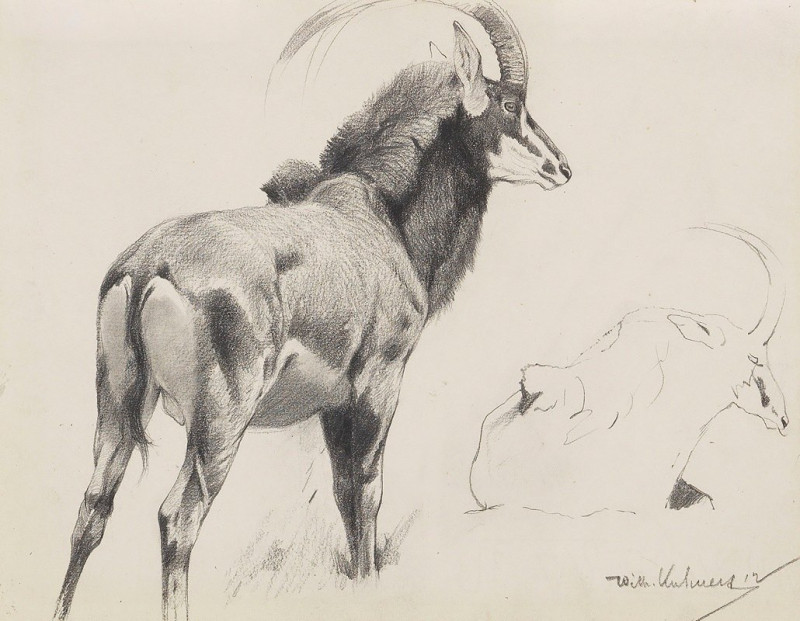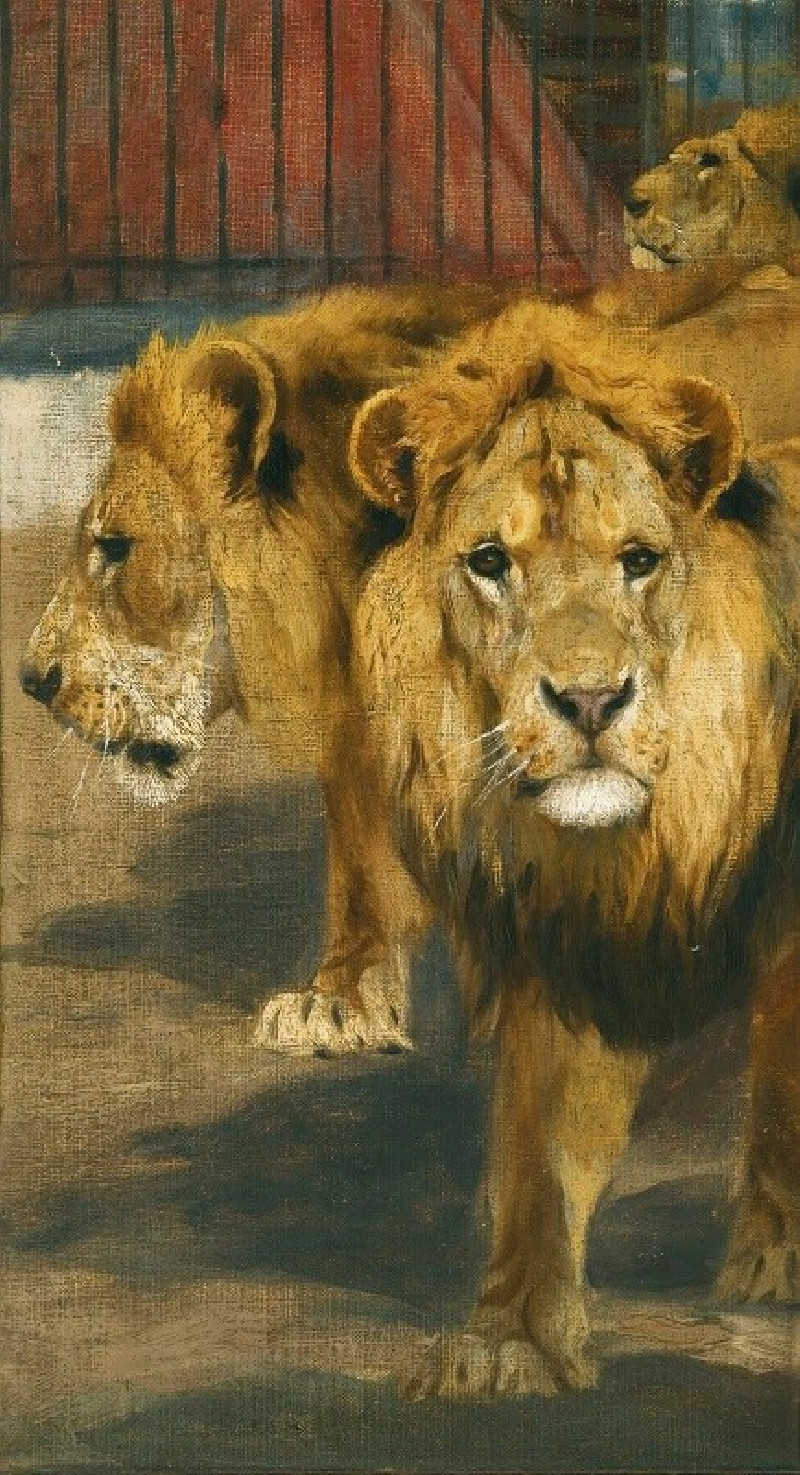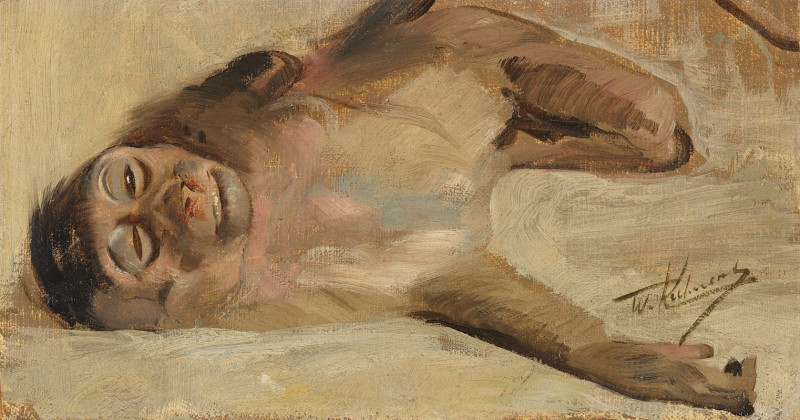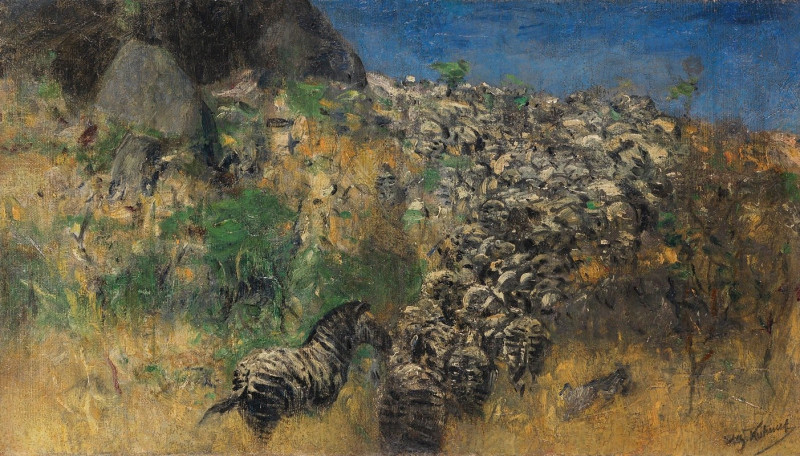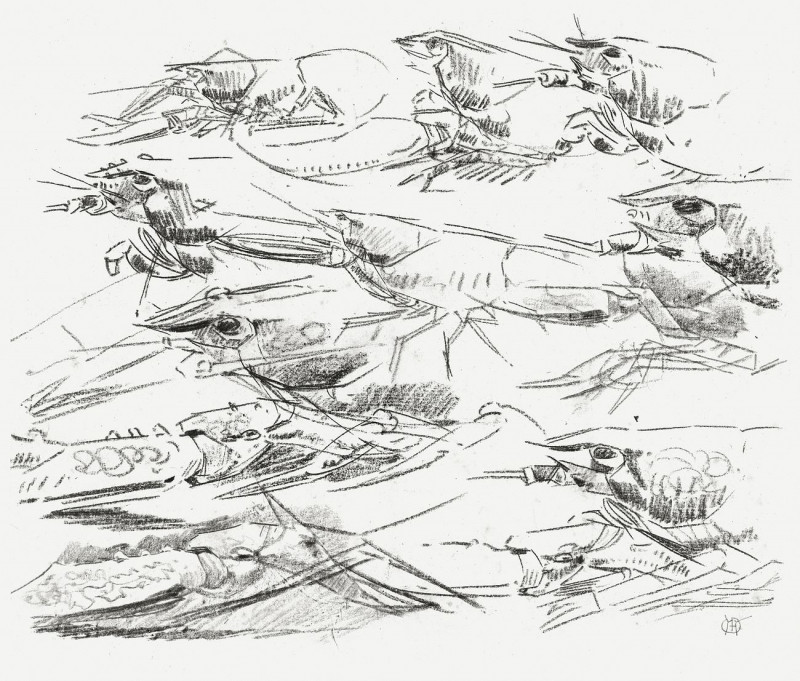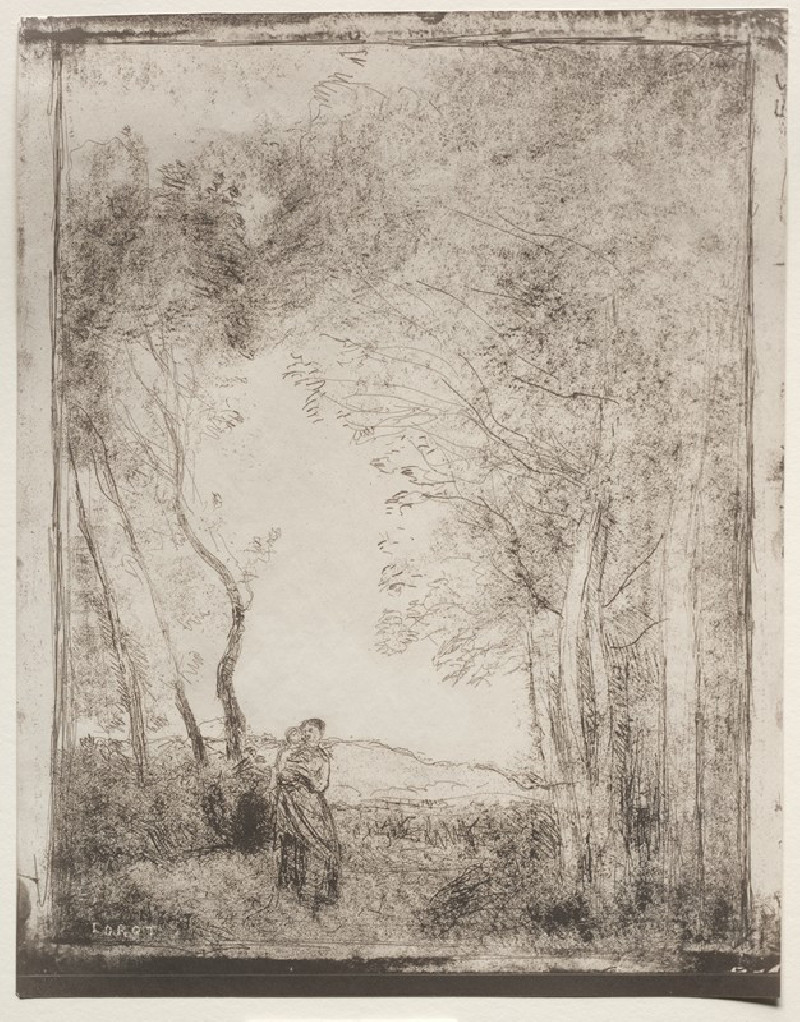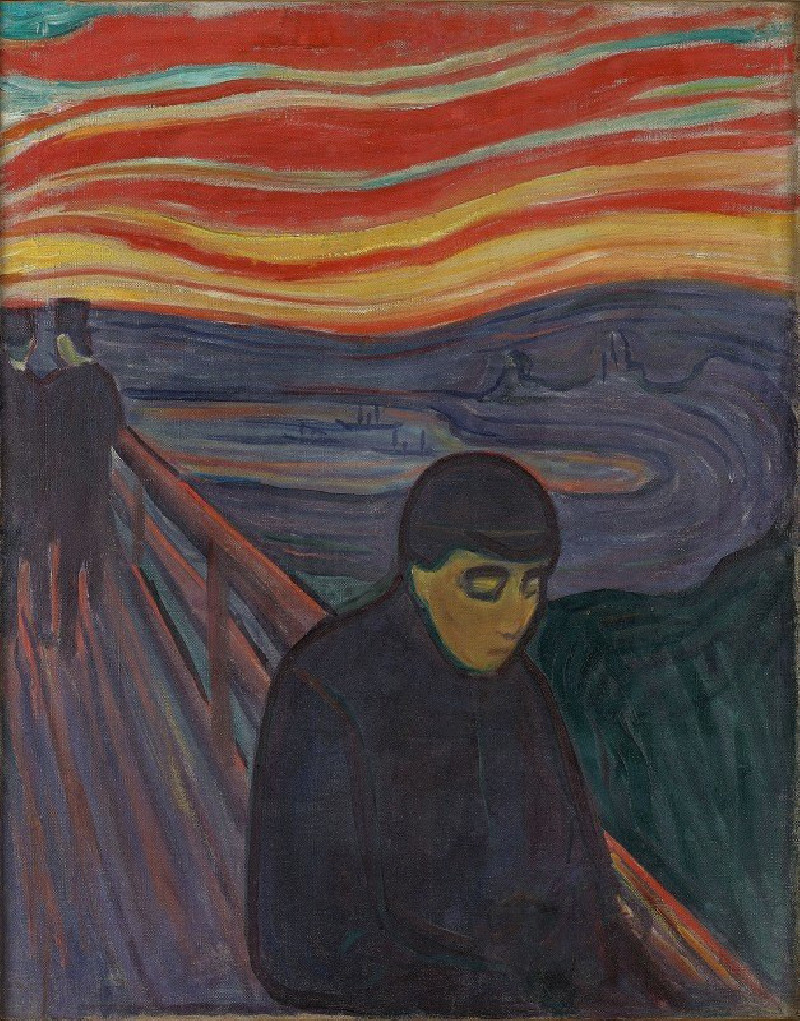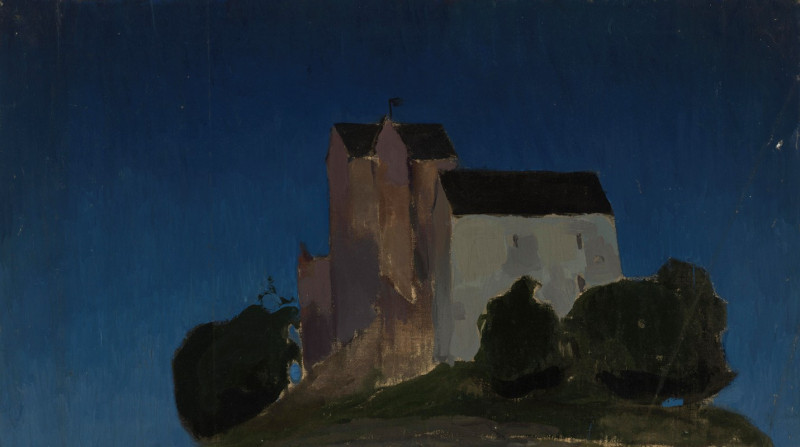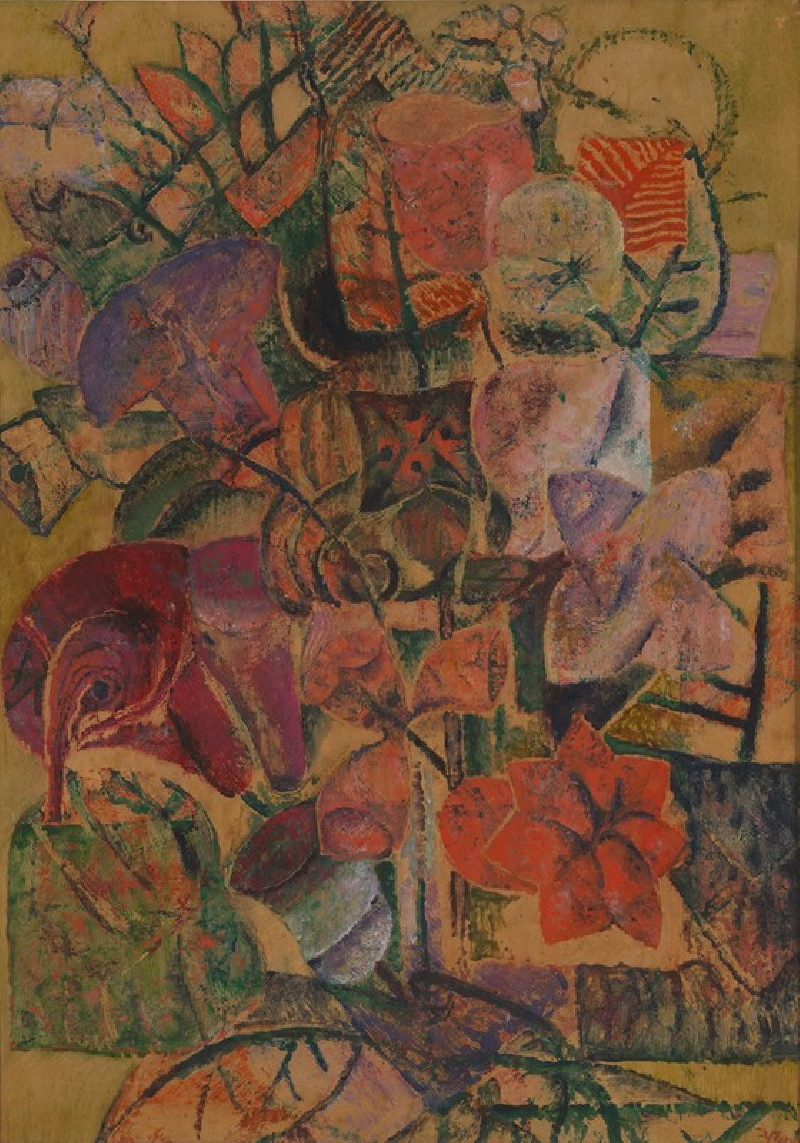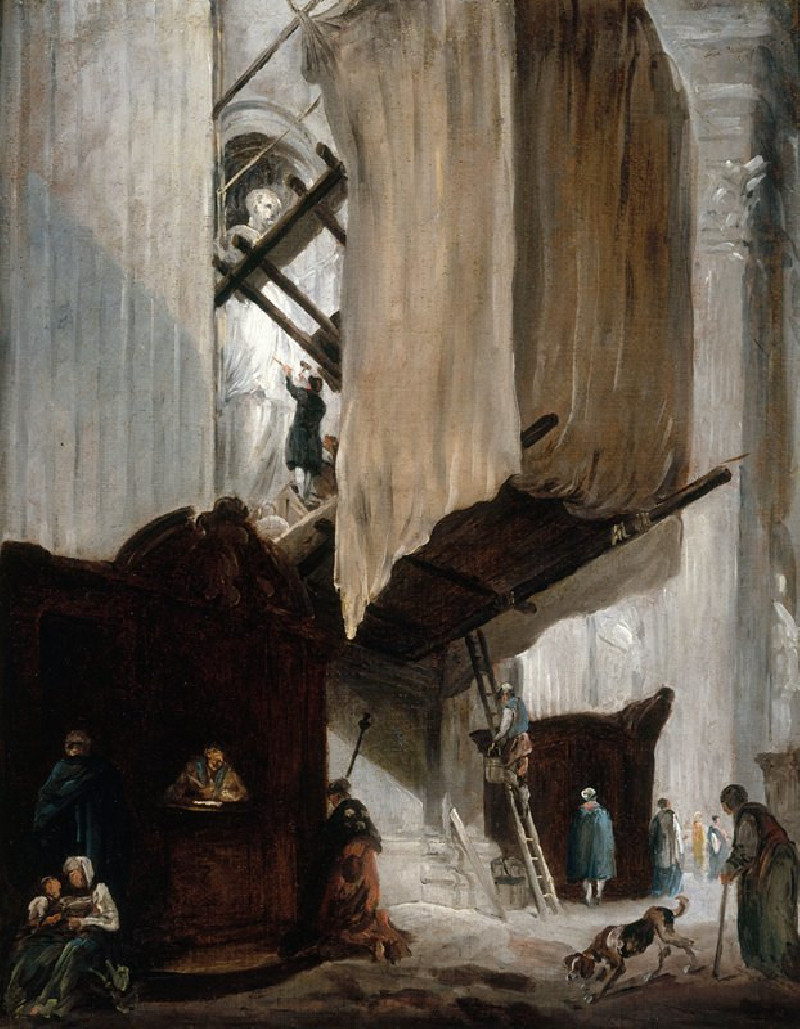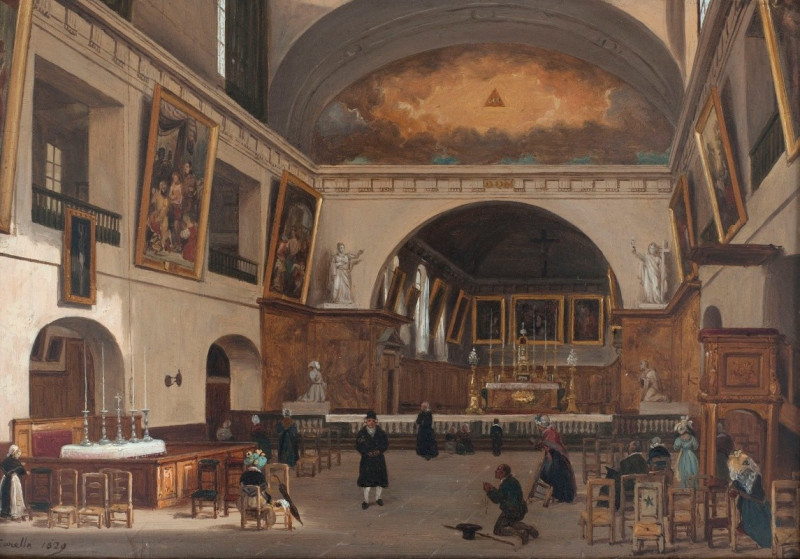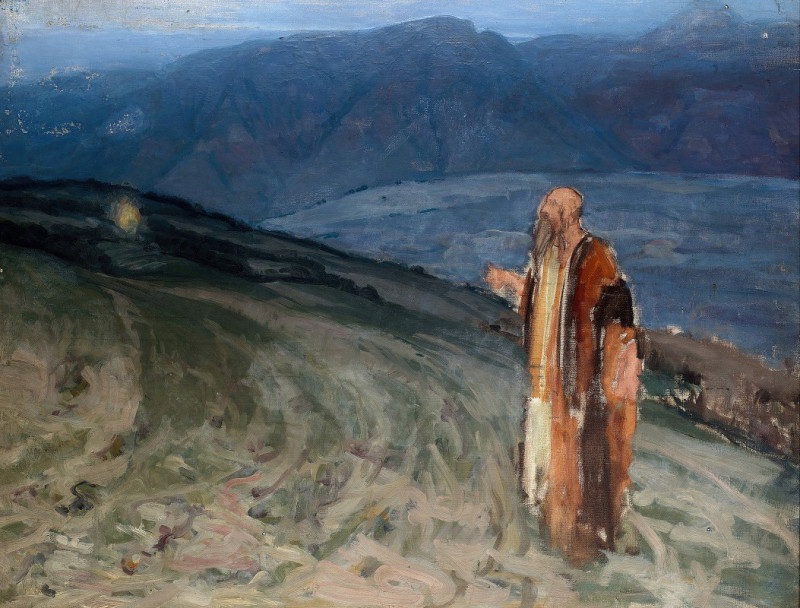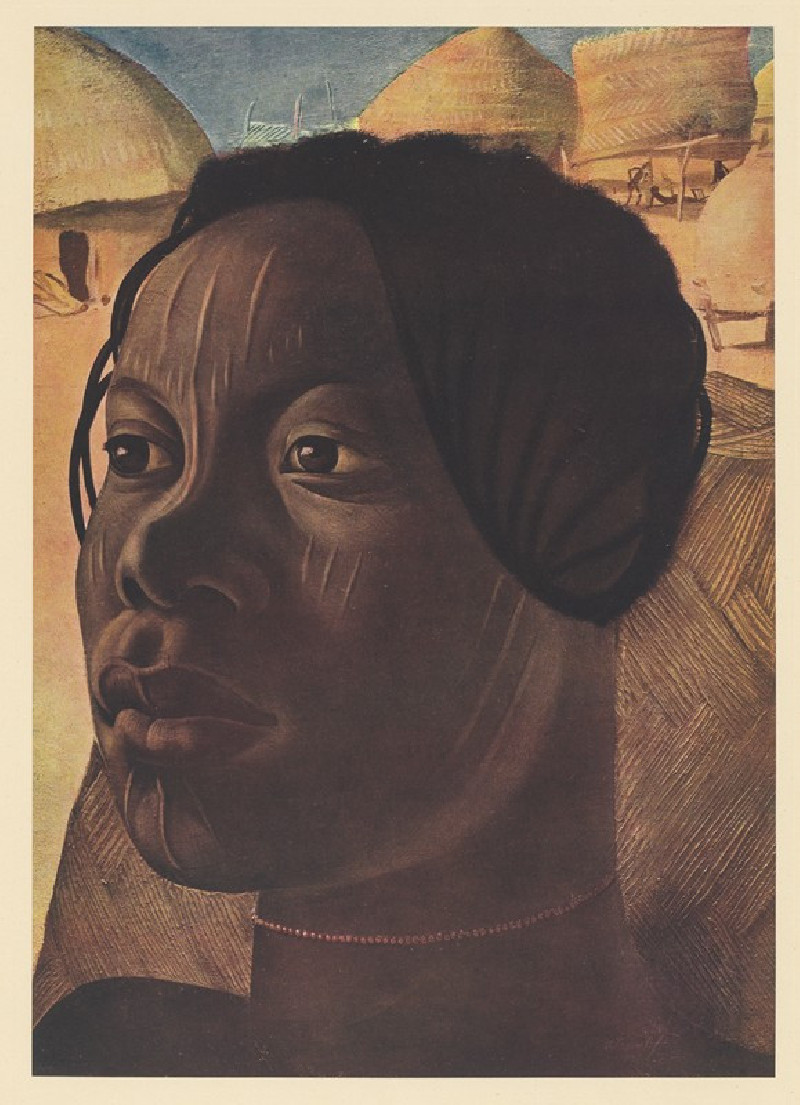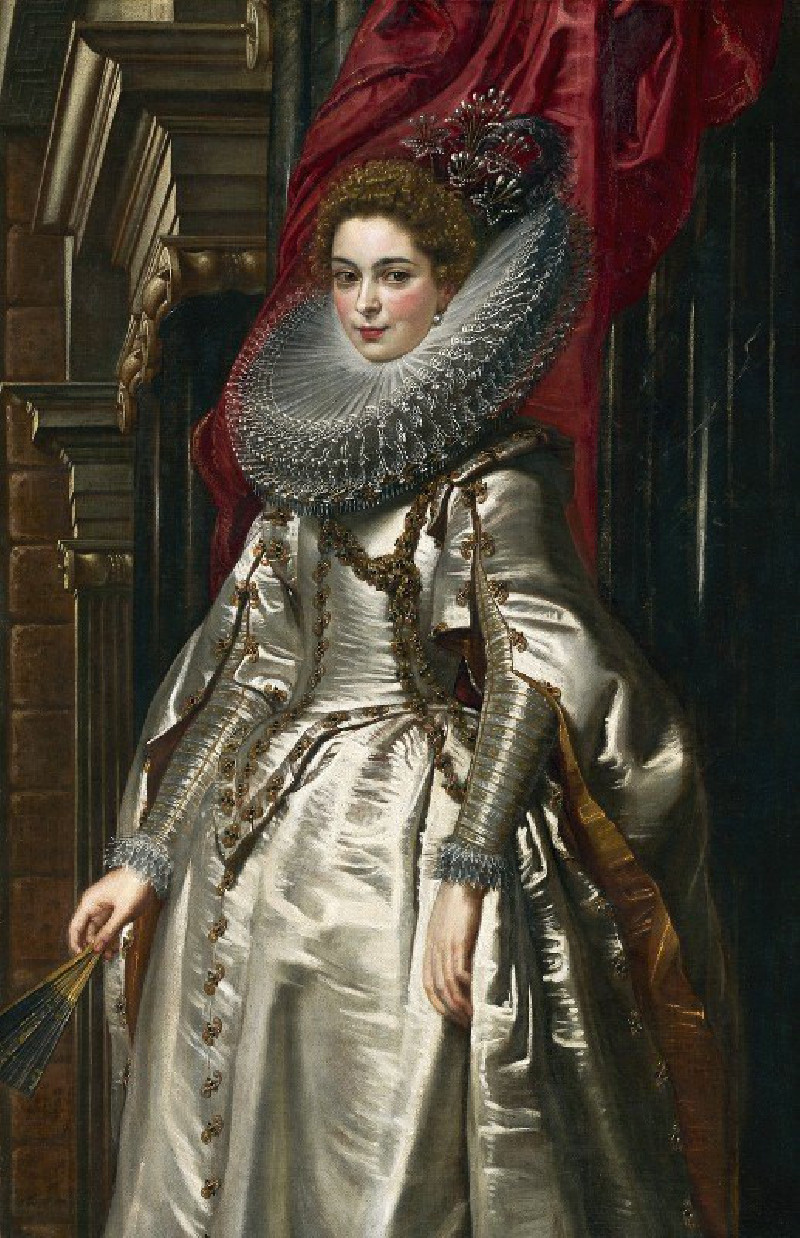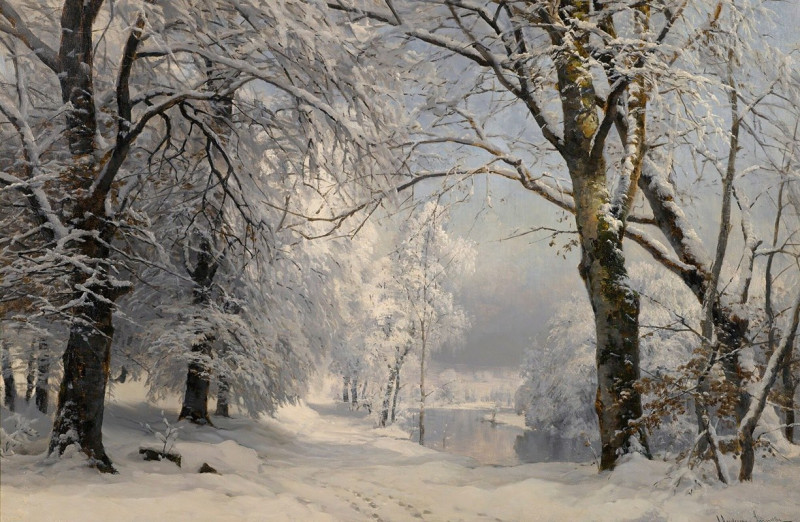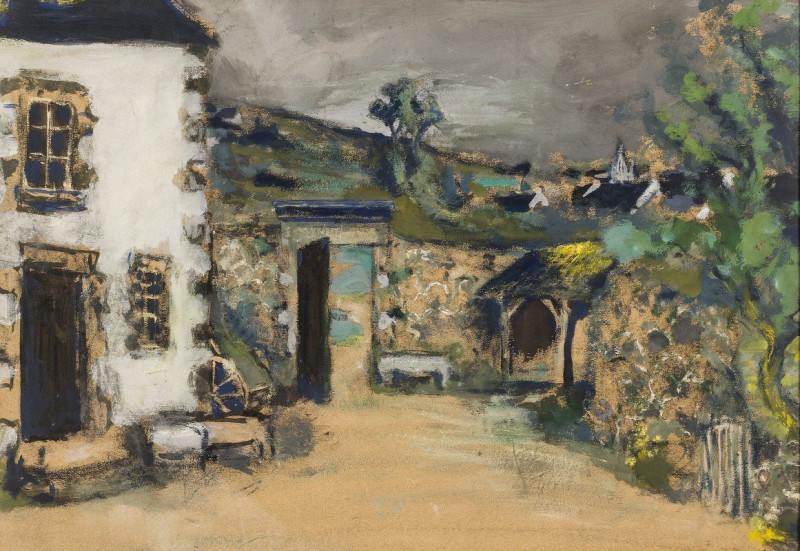Hyäne (1905)
Technique: Giclée quality print
Recommended by our customers
More about this artwork
Wilhelm Kuhnert's striking painting titled "Hyäne" (1905) offers art lovers a vivid glimpse into the untamed wilderness, masterfully crafted by one of Germany's pioneering wildlife artists. Set against the backdrop of a harsh yet beautifully depicted landscape, the painting captures a solitary hyena engaging with the remnants of a hunt—a powerful portrayal of survival and adaptability in nature.Kuhnert, known for his authentic depictions of animals, has skillfully used light and shadow to emphasize the tough, speckled coat of the hyena, which sharply contrasts against the softer, illuminated background of deserts and distant mountains. The creature’s intense focus and the detailed rendering of the bones it investigates tell a story of sustenance and the cycle of life in the wild.This artwork not only showcases Kuhnert's keen observation skills and deep understanding of animal behaviors but also offers viewers a reflection on the often overlooked aspects of the animal kingdom. "Hyäne" invites us to ponder the raw beauty and brutal reality of nature, captured through the lens of a master artist.
Delivery
Returns
Friedrich Wilhelm Kuhnert was a German painter, author and illustrator who specialized in depictions of animals. After illustrating Alfred Brehm's books, he traveled to German East Africa to observe animals in their natural habitat and created a series of paintings that defined Africa for many Germans of the period.

